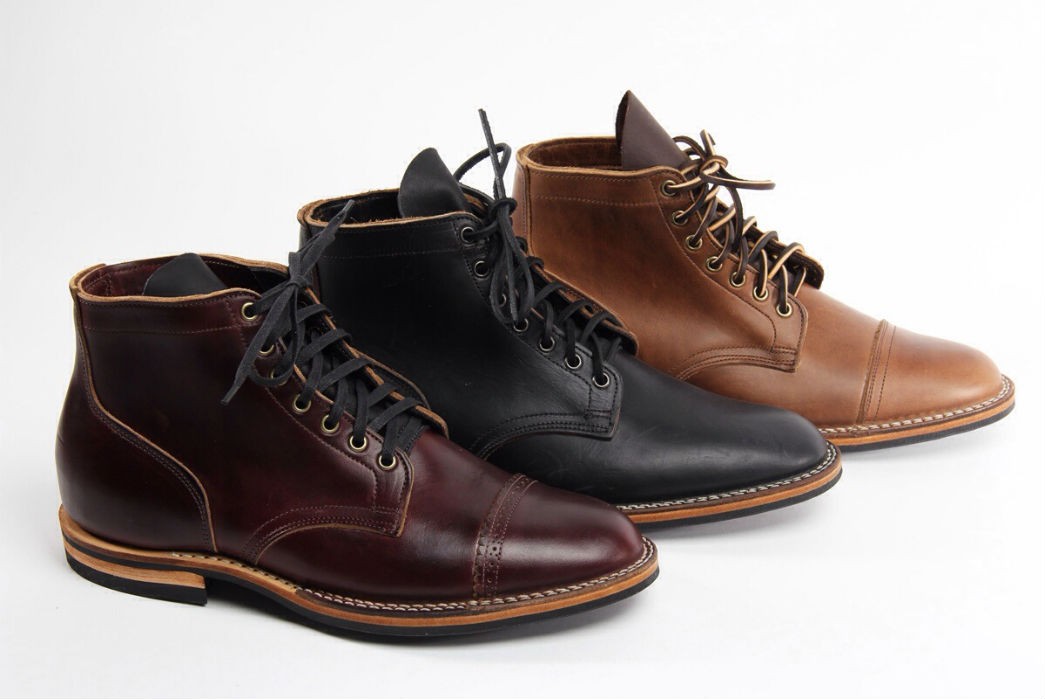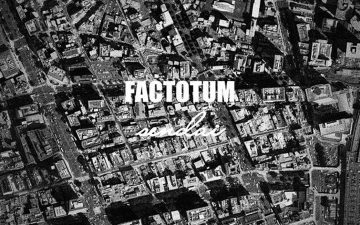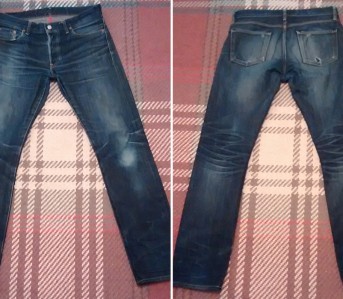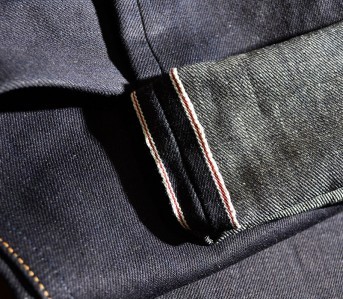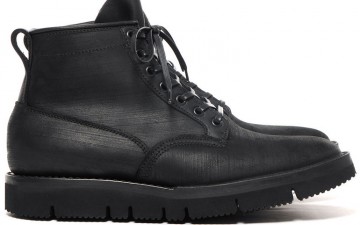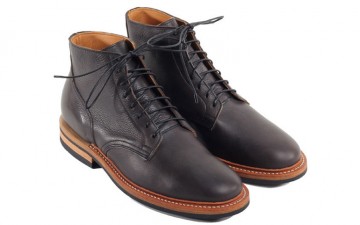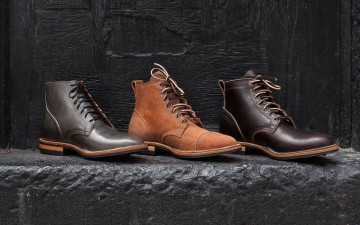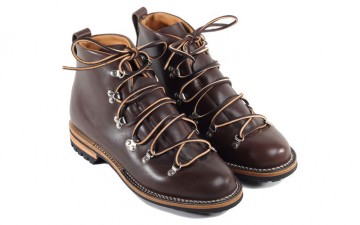Viberg Boots, now in its third generation of family ownership, has been producing work boots since 1931. Well-loved among Heddels and its readers, we’ve discussed Viberg dozens of times already. But never have we actually told its story. Today, that changes.
Back in the 1930’s Edwin Viberg started his brand with the goal of making great, durable shoes for the men who really needed them: the farmers and loggers of the Pacific Northwest. From the beginning, it was a down to earth and carefully thought out operation. Ed had the forethought to use brass tacks on the shoes in order to avoid any rust forming on his shoes in wet farms or forests. They set up shop in Victoria in Canada’s British Columbia province in 1948, and 20 years later it was here that the Viberg factory was created. Edwin might have passed on, but his son Glen is still on the shop floor.
For the majority of its existence, function has thoroughly trumped style at the Viberg design table. In fact, the main website for most of its shoe styles is simply “Workboot.com”, where you can find Viberg’s logger, western, biker, workplace, hunting boots and more; along with other brands that Viberg holds in high regard. One of those is Danner—Portland, Oregon’s generations old bootmaker–with whom Viberg shares a long history and at one point even shared shoe designs.
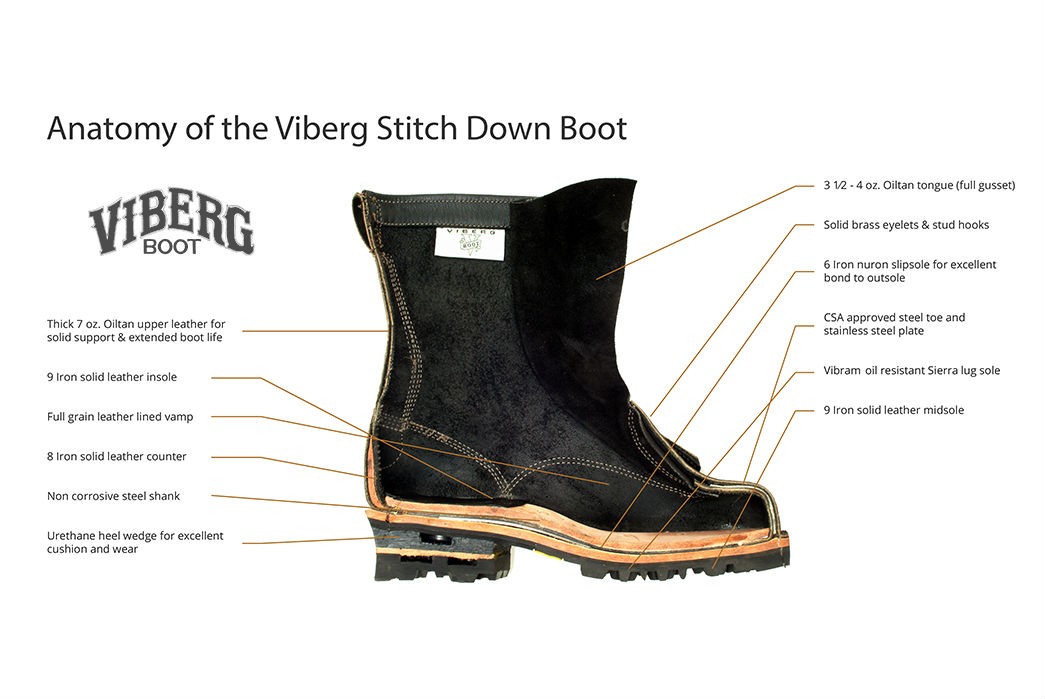
Once the heritage boot came back in style, the burgeoning tide raised all ships, and opened a new market for Viberg to join brands like Red Wing, Wesco, Alden, and Wolverine in producing high quality boots for more style conscious consumers than their typical lumberjack clientele. For Viberg, the bread and butter has been a modern update to Ed Viberg’s original work boot, the Service Boot.
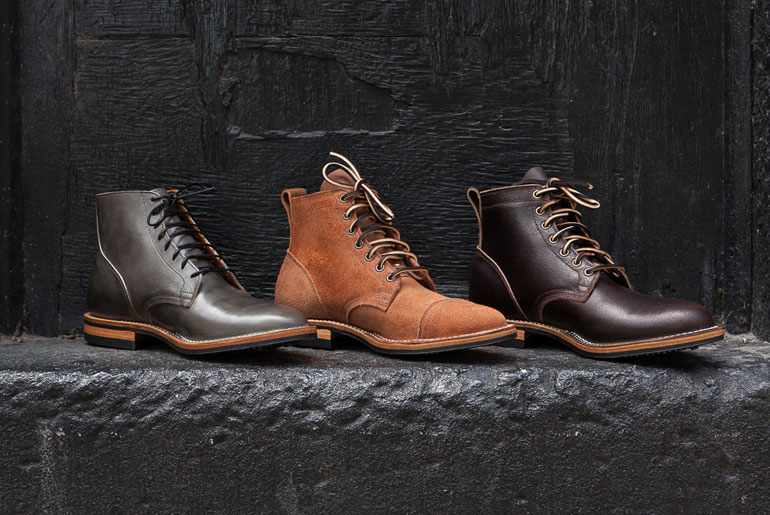
Three Viberg Service Boot makeups for Chicago’s Notre Shop.
The Service Boot is akin to many World War II era military boots. The two most popular lasts are the 2030 and the 1035. Both of these have a quarter that is more drastically curved around the heel and a toe box that is either partially structured or unstructured. As such, the shoe stands out as sleek and dynamic, often offset by the use of chunky leather laces and a high tongue. It is a superb example of refined utility, looking better with age and still carrying itself well in formal environments.
This is, in part, indubitably due to the standard of quality Viberg maintains with its wares. The shoemaking process has over 200 steps and incorporates the best materials the brand can get its hands on: finely tanned leathers, British Dainite soles, insoles from Spain, and hobnails from Switzerland. It’s an uncompromising adherence to detail, but it pays off.
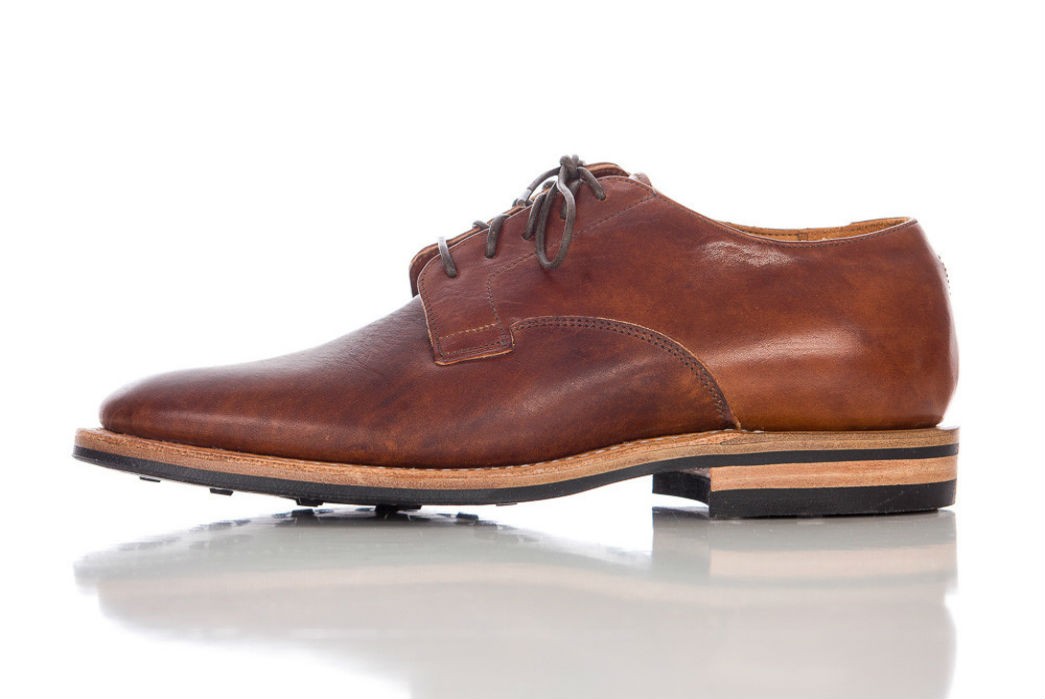
The Viberg family has been smart on the business end as well. Few workwear brands have collaborated for as long and as often with boutiques and other brands. It has helped the lifestyle designs stay innovative, rather than reactionary.
In addition to the Service boot, the heritage line incorporates a myriad of derby boots, trench boots, engineers, chukkas and more. Recently, the family dusted off and revised one of Ed’s prototype designs in a derby shoe. It’s taken off and now can be found in ten different options on the home website alone. The experimenting has also led to some startling results, like the Inside Out Service Boot brand manager Guy Ferguson discussed this past fall. It’s hard to say whether or not this would every make it to market, but it’s fun to see a brand trying something different.
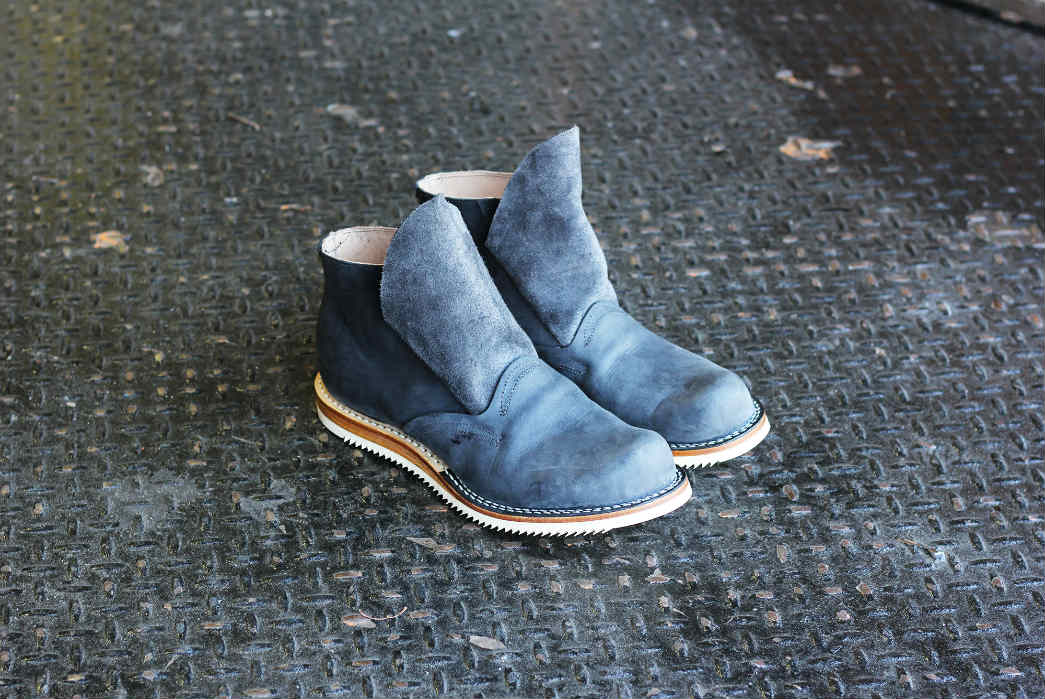
Unfortunately for the wallets of Viberg’s aspiring customers, these creations do not come cheap. Don’t expect to pay less than $680 US for a Chromexcel option or a cool thousand for something in shell cordovan. It’s double what more common options can be had for, but Viberg owners will attest to it being worth the extra cash. For the more frugal, keeping an eye out for Viberg’s sample sale might be the best way to go. Last year’s New York event in June saw 400 pairs in a wide number of sizes sell for between $200 and $600, yielding notable savings to those lucky few.
Investing in good shoes is perhaps the best purchases one can make. Beyond basic style, keeping your feet upright and supported will do the same for the rest of you. Your feet aren’t going to grow and shrink like your waist line, nor bulk up after leg day at the gym. So rest assured that it’ll be money well spent–just make sure you get the right size.
Viberg can be found on the brand’s website and across the globe at these stockists.

